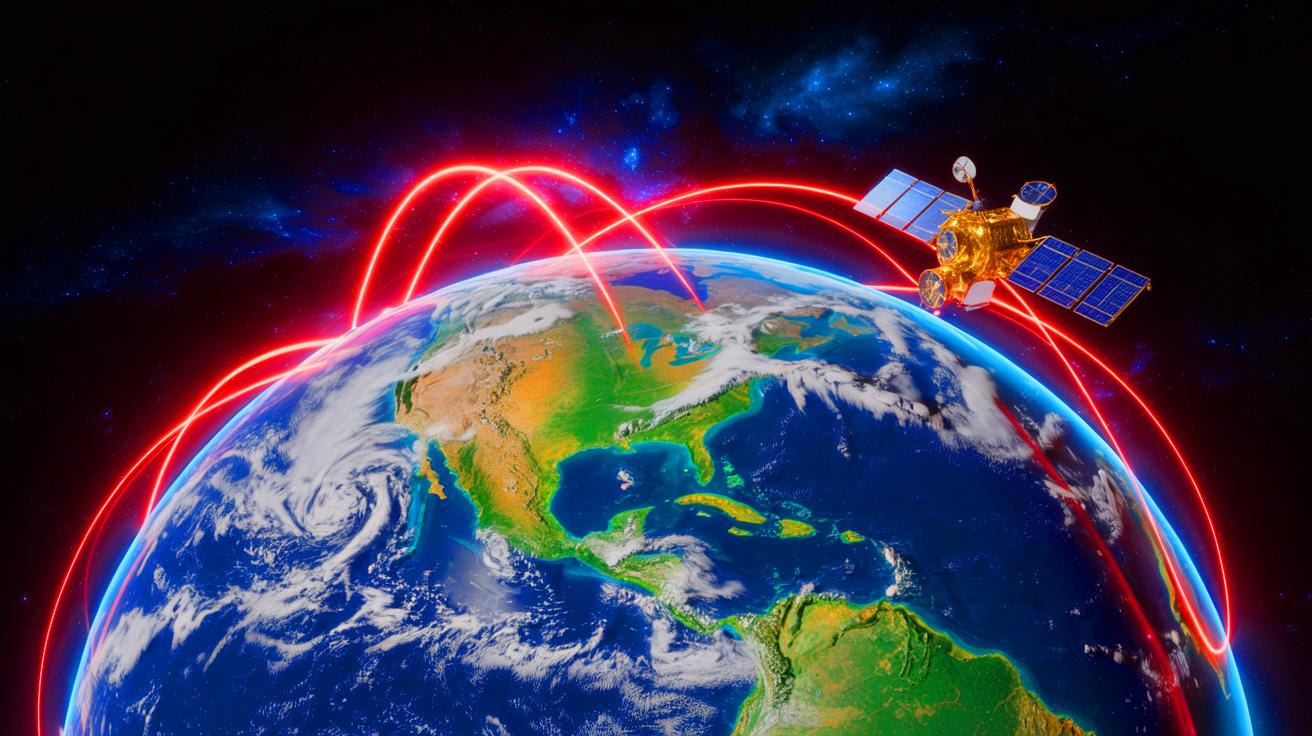- 🌍 The South Atlantic Anomaly (SAA) is characterized by a weakened magnetic field over South America, posing risks to space technology.
- 🛰️ Satellites traversing the SAA face exposure to high-energy particles, leading to potential single event upsets and system malfunctions.
- 🔄 The anomaly is dynamically changing, drifting northwest and splitting into two lobes, increasing hazards for spacecraft.
- 🔬 NASA uses satellite data and core simulations to model the magnetic field’s evolution and improve mission planning.
The South Atlantic Anomaly (SAA) represents a significant challenge for both the scientific community and space technology operators. This vast region of weakened magnetic field over South America and parts of the South Atlantic Ocean offers a unique testbed for understanding the complex processes of Earth’s magnetic field. As NASA and other space agencies contend with the implications of the SAA, the stakes are high for ensuring the safety and functionality of the space technologies we increasingly rely on. The anomaly’s dynamic nature underscores the need for continued research and adaptation in the face of this intriguing yet formidable natural phenomenon.
Understanding the South Atlantic Anomaly
At the center of scientific investigation is the South Atlantic Anomaly (SAA), a fascinating geomagnetic phenomenon. This region, marked by a notable reduction in magnetic field strength, acts as a breach in Earth’s natural magnetic shield. This weakness allows high-energy solar particles to penetrate closer to the planet’s surface, posing potential risks to both terrestrial and space-based technologies.
The origins of the SAA are traced to the geodynamo process within Earth’s outer core. Here, the movement of molten iron and nickel generates the magnetic field that surrounds the planet. However, this generation is not uniform across the globe. The tilt of Earth’s magnetic axis and the presence of the African Large Low Shear Velocity Province, a massive dense structure deep beneath the African continent, disrupt the magnetic field in this region. These disruptions result in a local polarity reversal, further weakening the dipole field intensity and contributing to the formation of the SAA.
Implications for Space Technology
The South Atlantic Anomaly poses substantial risks to space technology. Satellites passing through the SAA are exposed to high levels of energetic protons, leading to potential single event upsets (SEUs). These SEUs can cause temporary malfunctions, data corruption, or even permanent damage if they affect critical systems.
To mitigate these risks, satellite operators implement preventive measures, such as shutting down non-essential systems during passage through the SAA. The International Space Station (ISS), which crosses the anomaly each orbit, has shielding to protect astronauts, but its external instruments remain vulnerable. Bryan Blair, deputy principal investigator for the GEDI instrument on the ISS, reports occasional “glitches” and resets, resulting in lost data. Missions like the Ionospheric Connection Explorer (ICON) must also adjust operations based on the SAA’s influence, highlighting the need for ongoing vigilance and adaptation.
Complex Dynamics and Emerging Challenges
The South Atlantic Anomaly is not static; it evolves over time. Recent observations from the ESA’s Swarm constellation and NASA’s SAMPEX mission reveal several concerning trends. The anomaly is drifting northwest, expanding in surface area, and beginning to split into two distinct lobes since 2020. This bifurcation increases the number of hazardous zones for spacecraft, complicating the development of predictive models for geomagnetic conditions.
Understanding these changes is crucial for satellite safety. Scientists like Terry Sabaka of NASA emphasize the importance of continuous monitoring and adaptation in satellite operations to mitigate potential disruptions. As the SAA’s morphology changes, it presents new challenges for the scientific community, necessitating a proactive approach to safeguard space technologies.
Future Prospects and Scientific Inquiry
NASA combines satellite data with simulations of Earth’s core dynamics to refine their understanding and predictions of the SAA. These efforts are incorporated into global models like the International Geomagnetic Reference Field (IGRF), which track the evolution of Earth’s magnetic field. These models are essential for both planning space missions and gaining insights into our planet’s internal structure. The approach is akin to weather forecasting, but on much longer timescales, allowing scientists to estimate the secular variation—the gradual changes in the magnetic field over years and decades.
While the current evolution of the SAA is unprecedented in the space era, geological records indicate that such anomalies are not unusual over long timescales. Importantly, scientists assert that the current SAA is not an early indicator of a magnetic pole reversal, a rare event occurring over hundreds of thousands of years. Thus, studying the SAA remains vital for protecting our orbiting technologies and deepening our understanding of the powerful forces that shape our planet.
As the South Atlantic Anomaly continues to evolve, the scientific community remains dedicated to understanding and mitigating its impact. With the potential to disrupt satellite operations and influence our comprehension of Earth’s magnetic field, the SAA poses intriguing questions about the future of our planet’s magnetic dynamics. How will these changes influence our technological and scientific endeavors in the years ahead?
Our author used artificial intelligence to enhance this article.
Did you like it? 4.5/5 (25)
